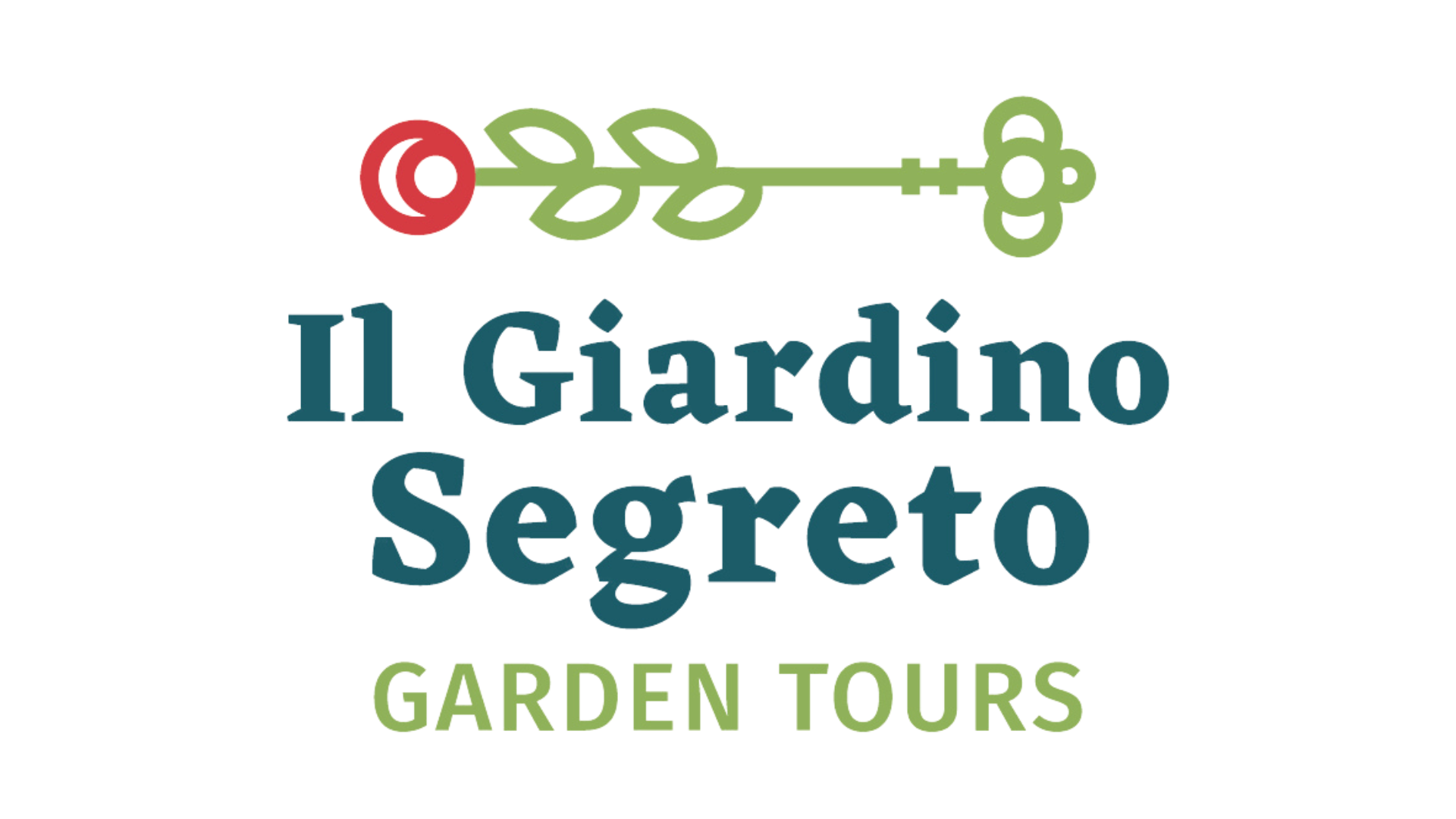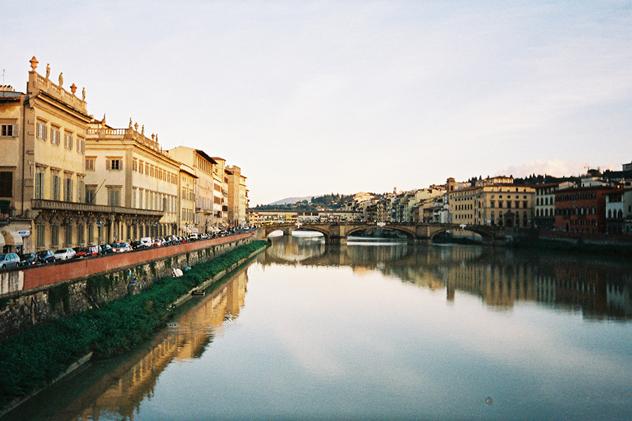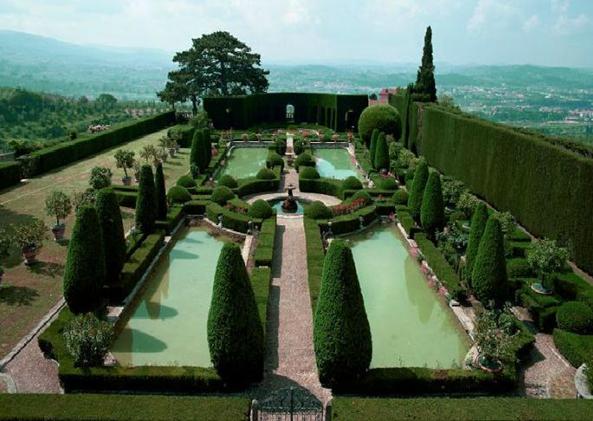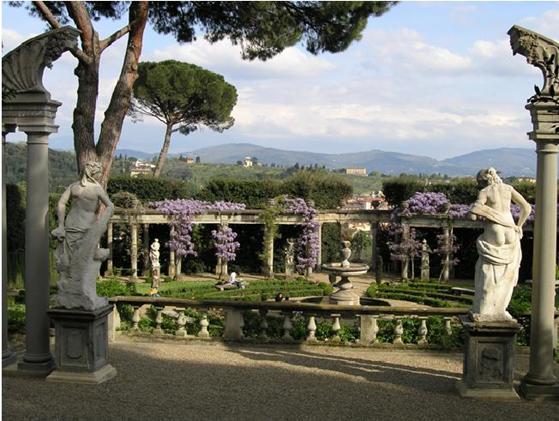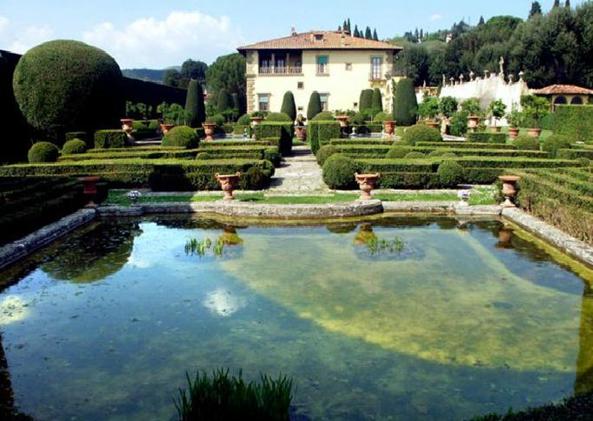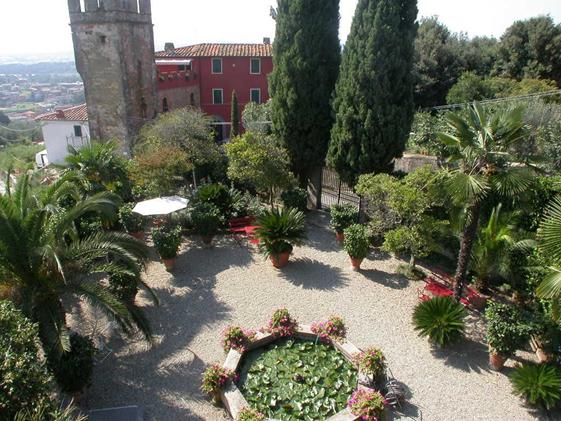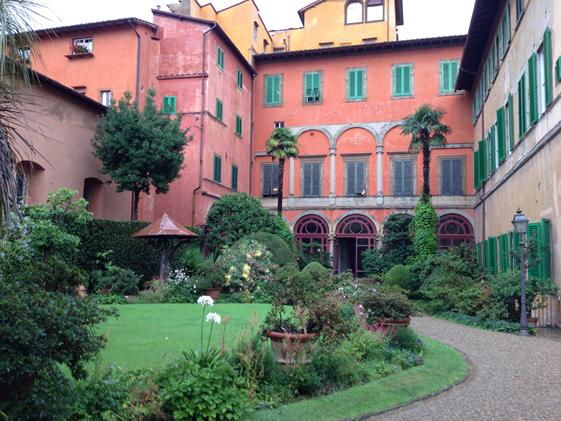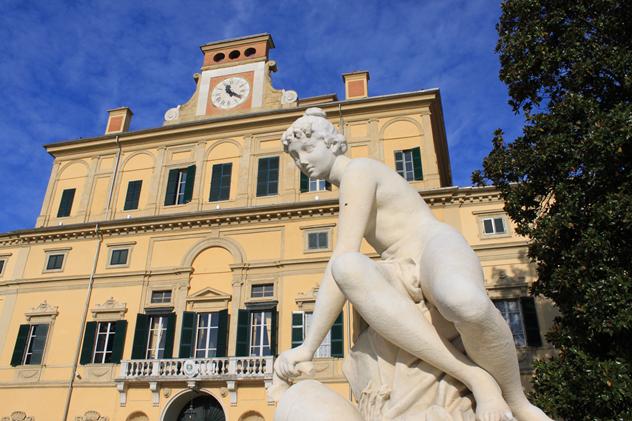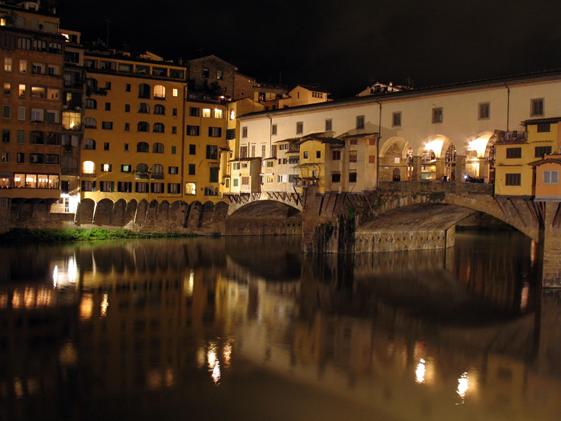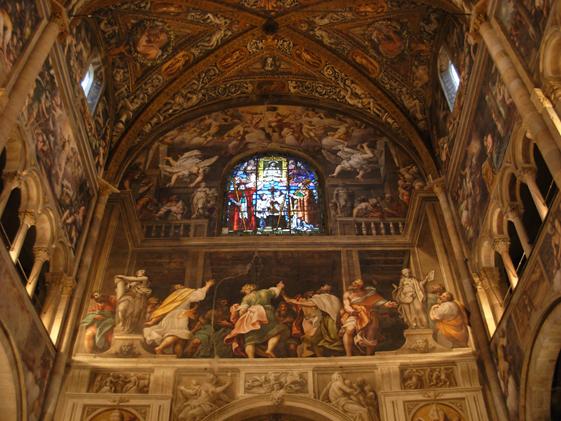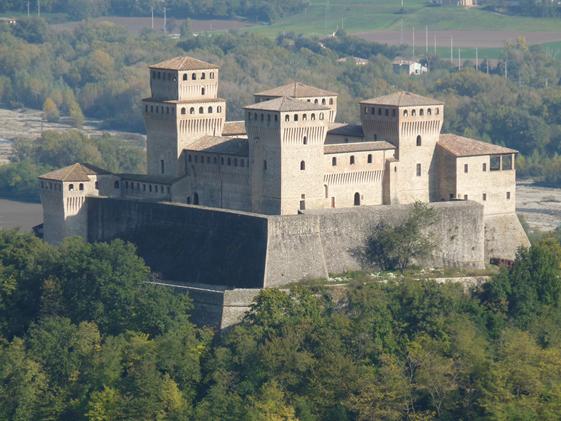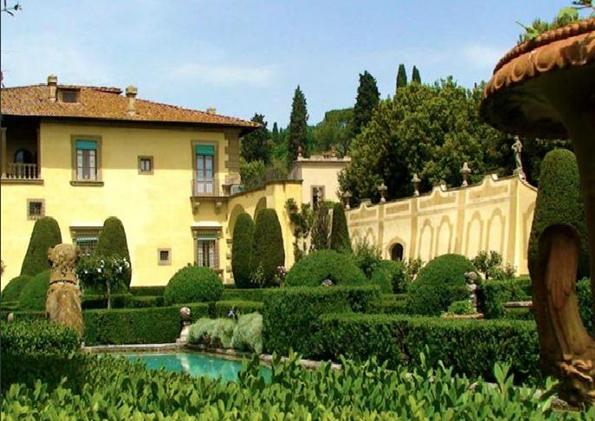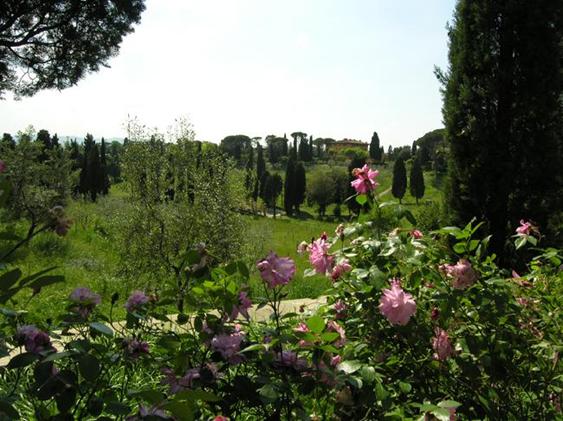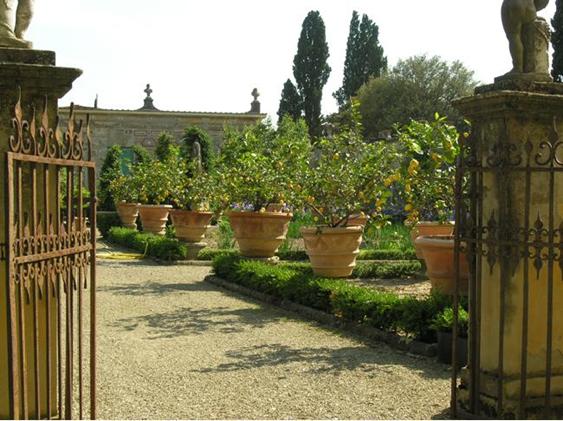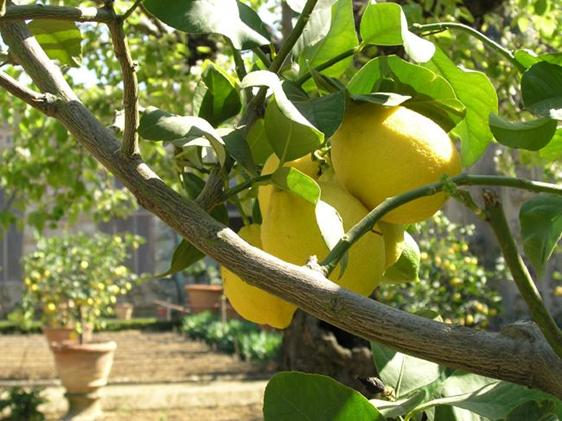

CONDITIONS
TOUR INCLUDES
- 4-nights accommodation with full breakfast;
- Aperitif in Villa Sermoli;
- Professional Tour guide;
- Coach
- Guided Tours and Admissions to Gardens and Monuments in the tour;
- Promotuscia Costumer Service;
- Medical luggage insurance
TOUR DOES NOT INCLUDES
- Flights;
- Drinks during meals ;
- Hotel Service porterage ;
- Local tax;
- Tips.
HOTEL
ITINERARY
FIRENZE AND PARMA AMONG VILLAS AND GARDENS
Day 1
Departure from Firenze airport and/or Firenze Train Station.
Check-in to Loggiato dei Serviti.
The hotel is located in front of Innocenti Hospital , designed by Brunelleschi, in Santissima Annunziata square. Dinner in hotel.
Day 2
Breakfast in hotel.
Meeting with the tour guide in hotel, for a guided tour of Florence. The tour starts with Guicciardini Palace, once the main residence of Guicciardini family, who came from Val di Pesa around the second half of the XIII century. It boasts a beautiful garden with an important collection of camellias. Next is Corsini al Prato Palace. Alessandro Acciaioli, a great botanist, built a garden in the village Ognissanti. In 1591, as he had needed more space, decided to buy a land in an area called “Prato di Ognissanti” appointing Bernardo Buontalenti as the designer of the project. In 1621, due to financial setback, the family sold the property, including the building constructed but not completed by Filippo di Lorenzo Corsini, who entrusted the project to Gherardo Silvani. The design of the garden has not been changed since. The garden is divided into two parts by a small road. On both sides there are many statues placed in a decreasing height order to produce a suggestive effect. Afterwards, visit to Gamberaia Villa in Settignano. The villa belonged to Benedictine Nuns of San Maerino up to the XIV century. In 1610, Zenobi di Andrea Lapi bought the villa, and In 171, was given to Capponi, who restored it in its current form. In this period, a back garden decorated with rustic motifs placed on a higher level than the building was built. Inside there are sculptures of stone animals, an orange garden with lemon in vases, and old-age oak trees.
Day 3
Breakfast in hotel.
In the early morning, visit to Budini Gattai Palace, beside the hotel. Ugolino di Jacopo Grifoni, secretary of Duke Cosimo de’ Merdici, in 1549 bought some houses between Santissima Annunziata square and via de’ Servi. He ordered to demolish and replace them with a building which would gave prestige to the family. Around 1573, it was created the Italian garden and erected a monumental fountain with statues of Jason, Venus and Sea Monsters realized by the sculptor Giovanni Bandini. In 700’, the garden was enlarged, and at the end of 800’, beautiful collections of camellias and azaleas were added. Other decorative elements of the garden are the beautiful glass-metal greenhouse, and the so-called “Monumento all’albero scomparso”, (Monument of the missing tree), created in 1908 in memory of an exemplary old-age Laurus camphora tree dried out during the winter.
Another important site to see during the day is Bardini Museum. Recently, besides
Bardini Museum, Bardini Garden was also reopened. It extends along the side of the hill and is a small representation of Boboli. Visit to Viila Bardini, which houses some exhibitions such as Cabianca and Macchiaioli. The Bardini Garden offers a large quantity of rare and exotic plants. The view of Florence from the panoramic terraces is a must-see.
Time for lunch. Next is Villa Petraia.
The Villa, with an impressive iron gate among statues and large vases, is reachable by a long avenue of cypresses. The banker Francesco Sassetti, in 1460, purchased and partly transformed the property. In 1546 the villa was handed down to Cardinal Capponi who gave its current form. In the period when Florence was the capital of the Kingdom of Italy, the villa used to be the seat of the Prussia Embassy. In the XX century, the new owners Arthur and Hortence Acton, began the renovation works of the garden. The only part that has remained unchanged is the one of the old lemon garden. They also built an Italian garden with open spaces and views over the countryside, and the decorative elements used in “stanze di verzura “.
In the late afternoon transfer to Parma and check in to 4-star Hotel Du Parc.
The hotel, in art Nouveau style, is located in the heart of Parma. It is connected by a small bridge that leads to Ducale Park.
Dinner in hotel.
Day 4
Breakfast in hotel.
Full-day excursion to Parma, and its charming old town centre. Meeting with the Tour Guide in the hotel.
Visit to Ducale Palace, the monumental complex of Pilotta, Farnese Theatre, National Gallery, Duomo built around 1106 with its marvelous frescoes by Correggio, and the Baptistery in pink marble.
Time for independent lunch.
In the afternoon, departure for Colorno to visit the Reggia. Afterwards visit to Torrechiara Castle, located on the hills of Langhirano and Feline, designed by Pier Maria Rossi Pellegrino It is one of the most beautiful castles in the world, also used as a location for many films. Afterwards, head to Badia Della Madonna Della Neve, and its small museum. Dinner in hotel.
Day 5
Breakfast in hotel.
Departure for Buggiano Castle near Pistoia also known as “ Borgo degli Agrumi” to visit
Its beautiful private gardens which show the typical tradition of Valdinievole valley, and the cultivation of the vegetable garden. Afterwards drive to Villa Sermolli.
The Villa offers splendid rooms decorated with frescoes, a Baroque garden style, and a beautiful panoramic terrace where you can enjoy the view of Gimignano valley and Volterra.
In the afternoon, transfer to Oscar Tintori Nursery. The owners have always been able to convey their love for plants. Not only are ornamental citrus requested in Italy, but also around the world. Everyone who comes here to visit the Nursery, is surprised by the vitality of these plants. This because citrus, in order to grow healthy, demand particular attention and only in this way, it is possible to see their full potential. After the visit departure for the airport and train station.
End of the tour.
